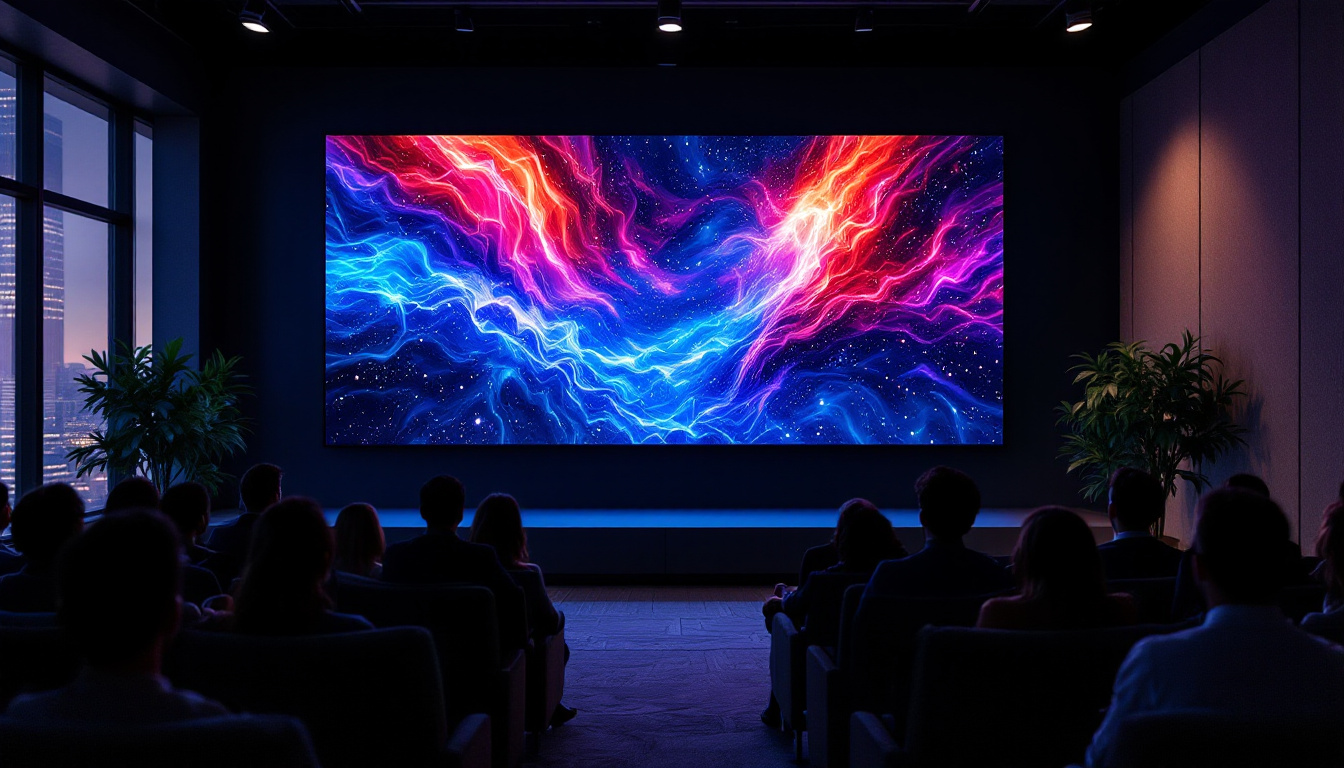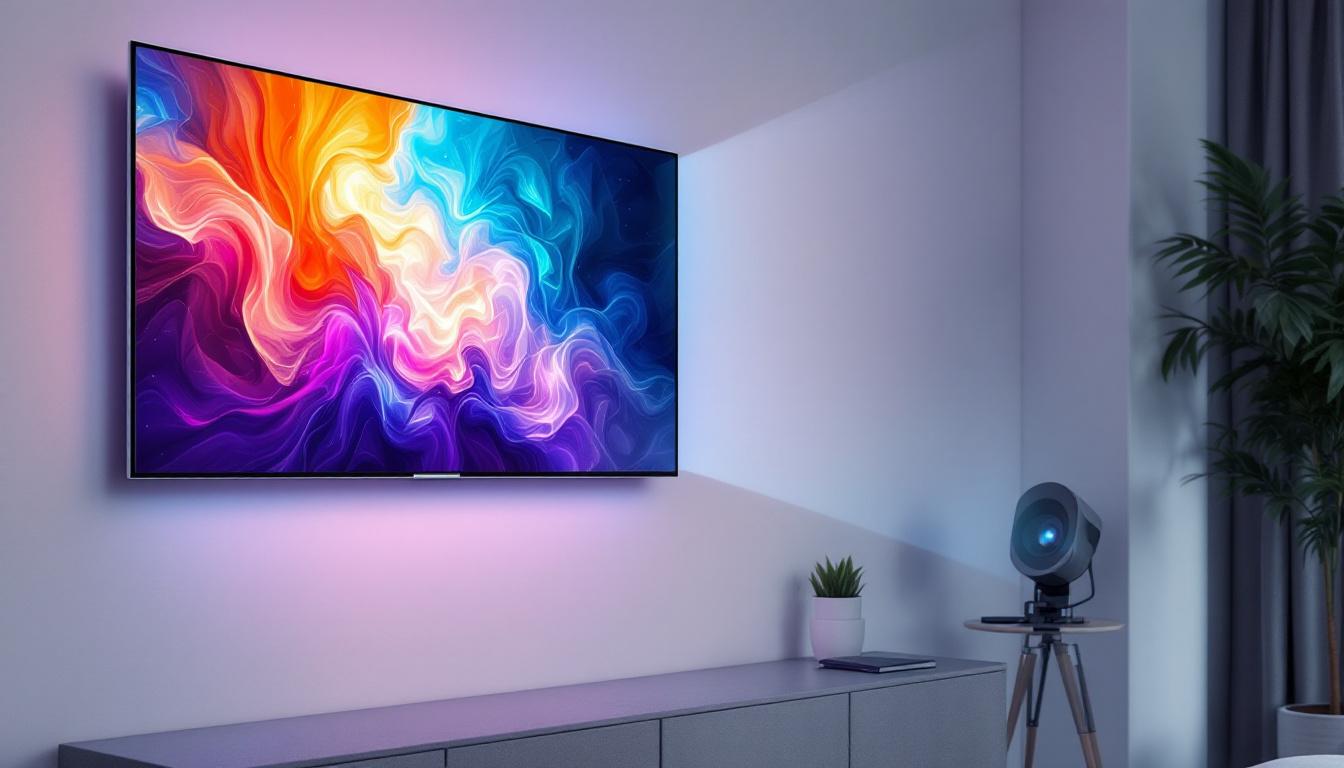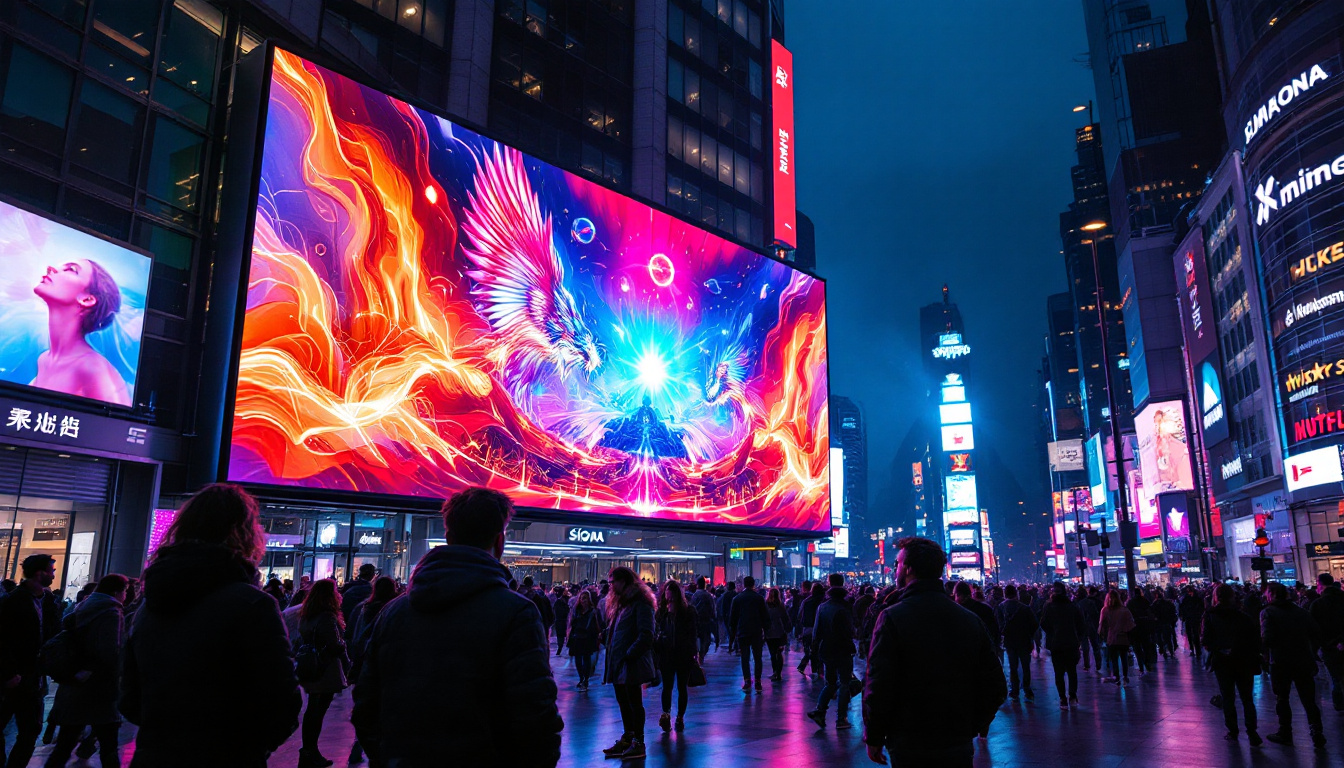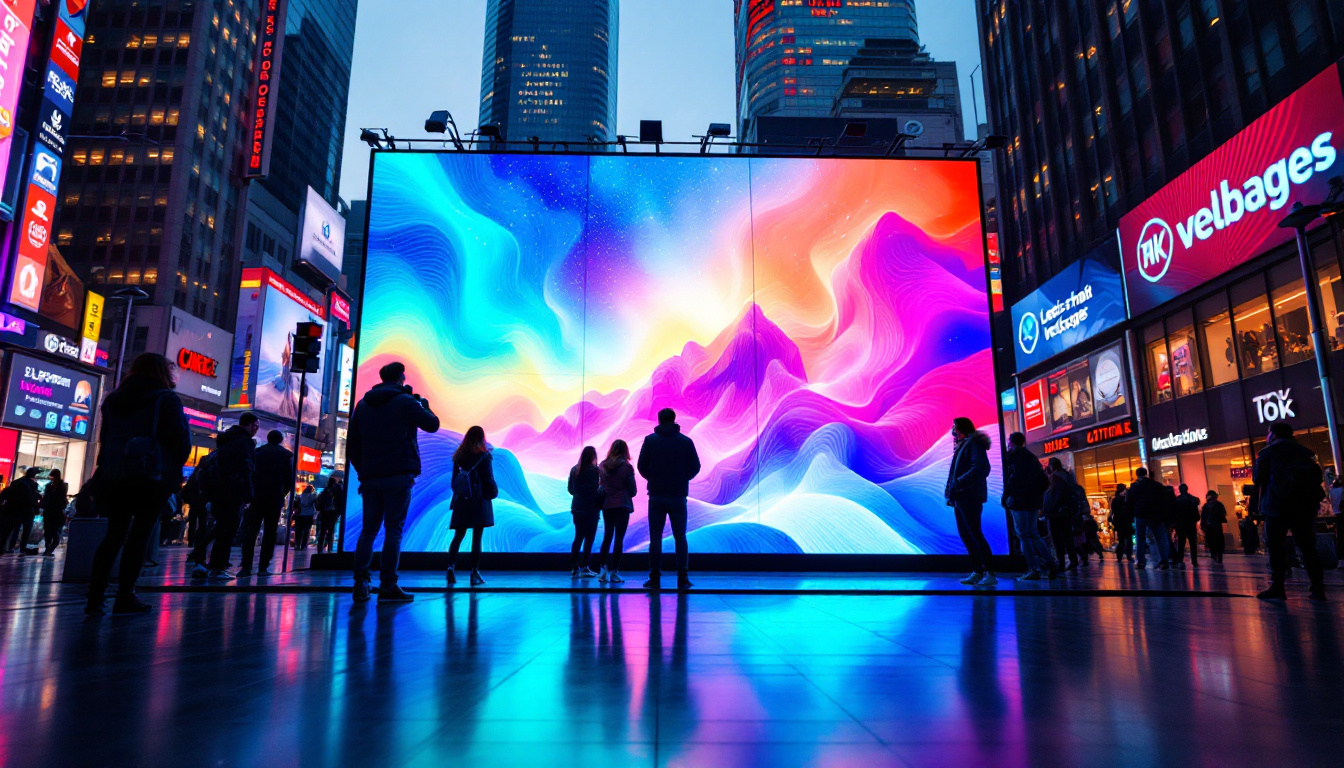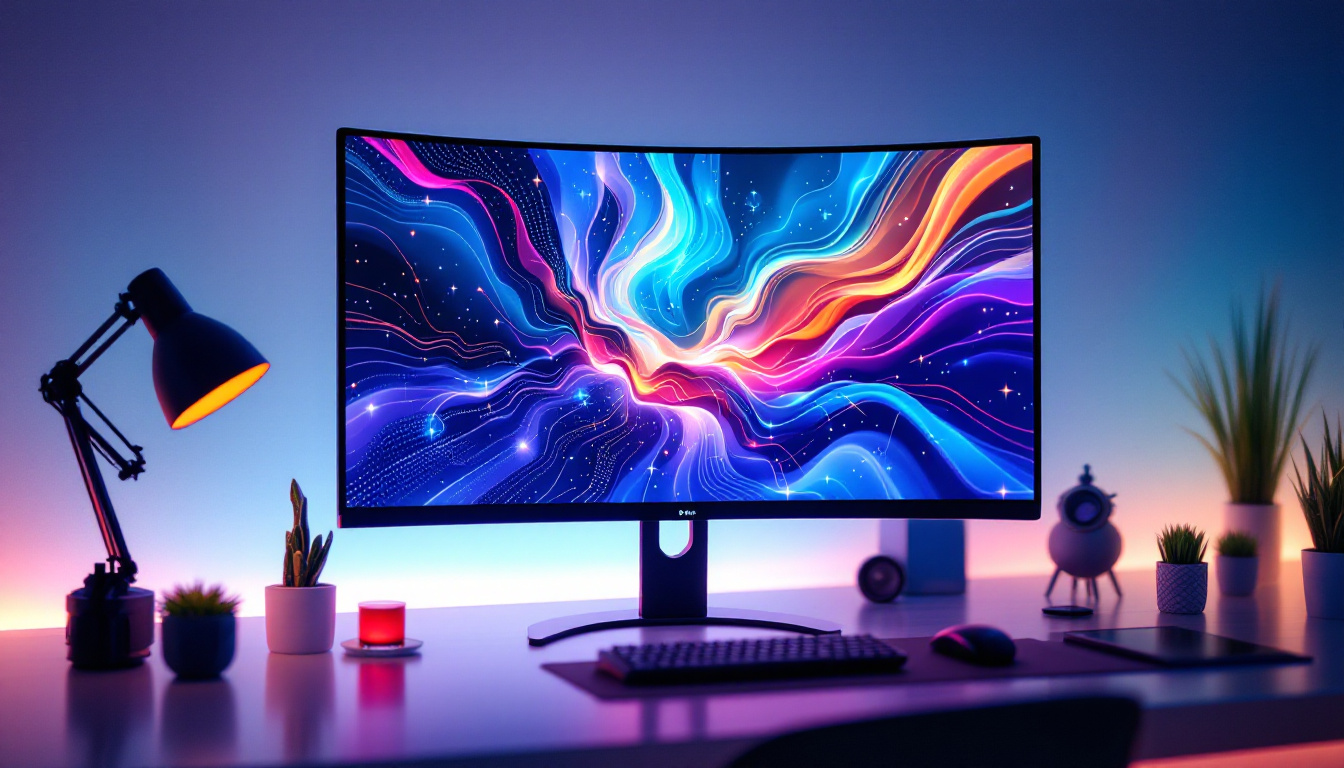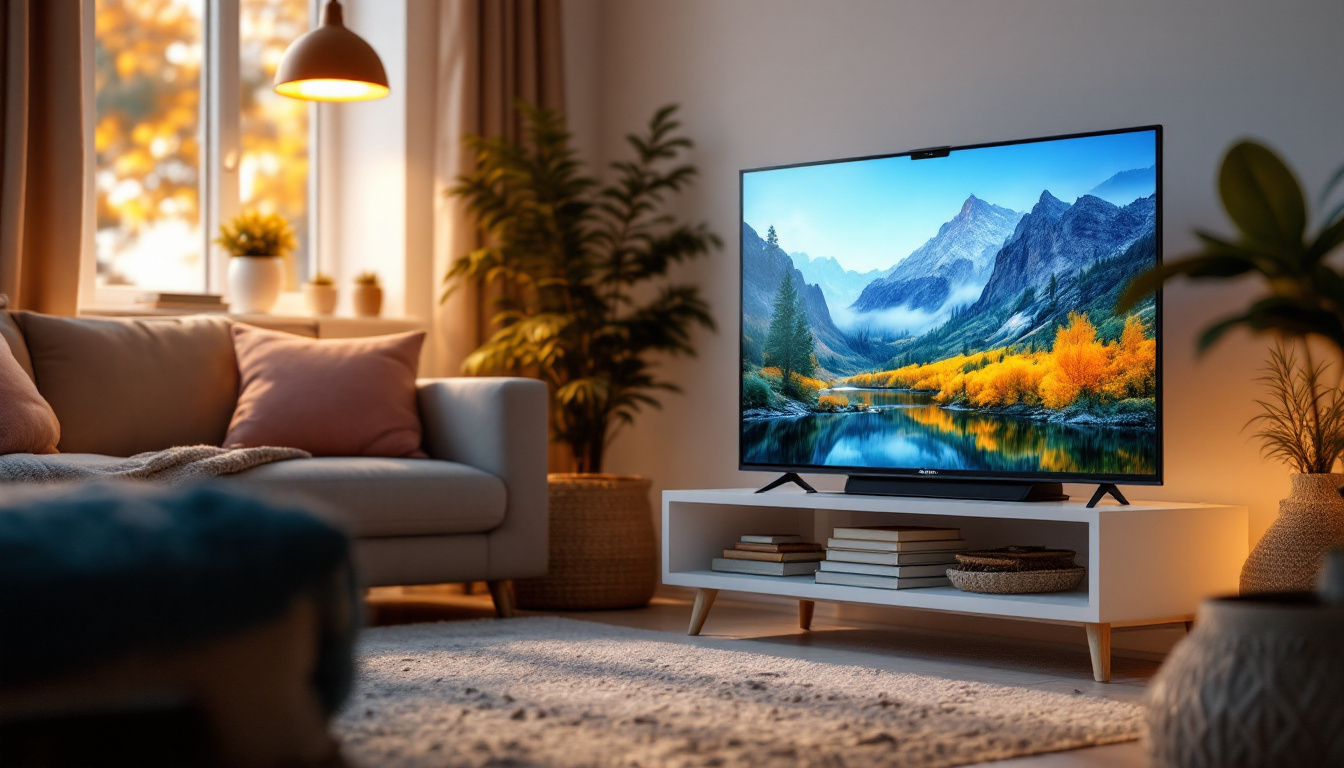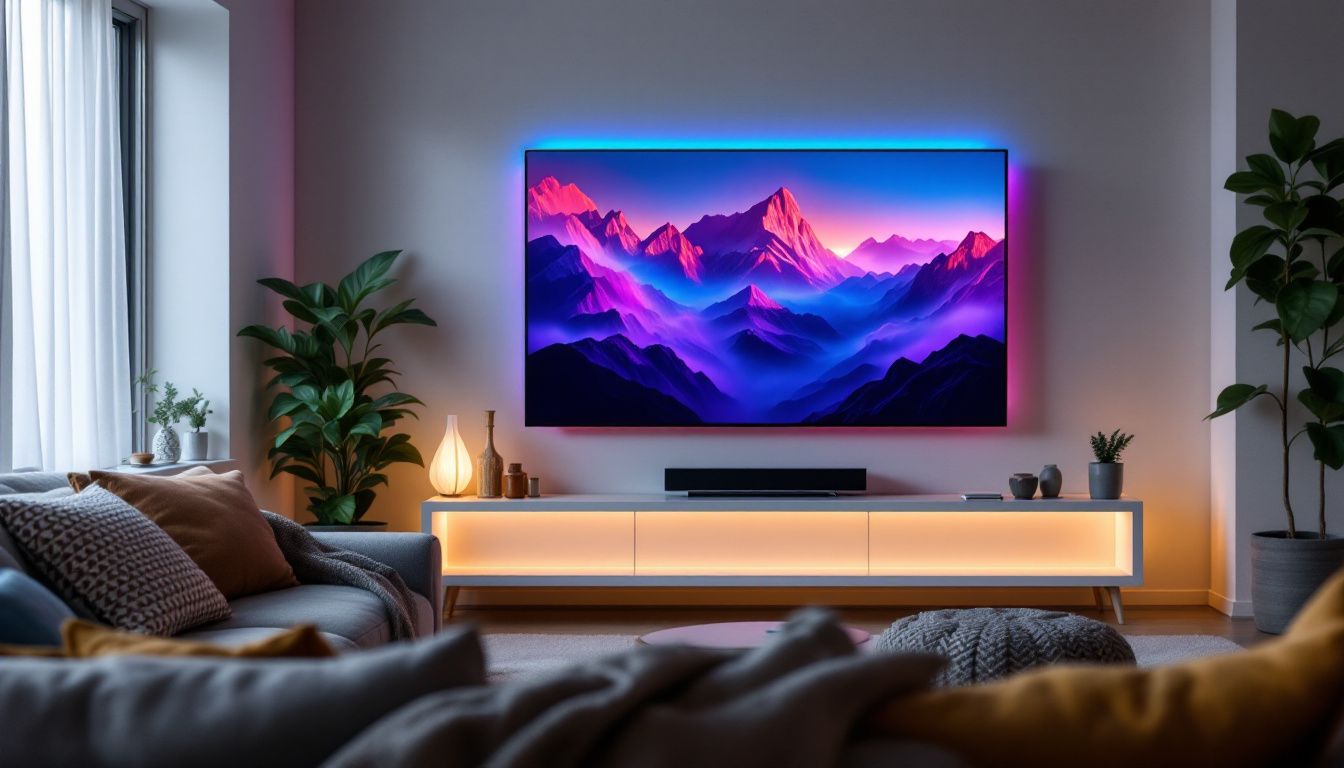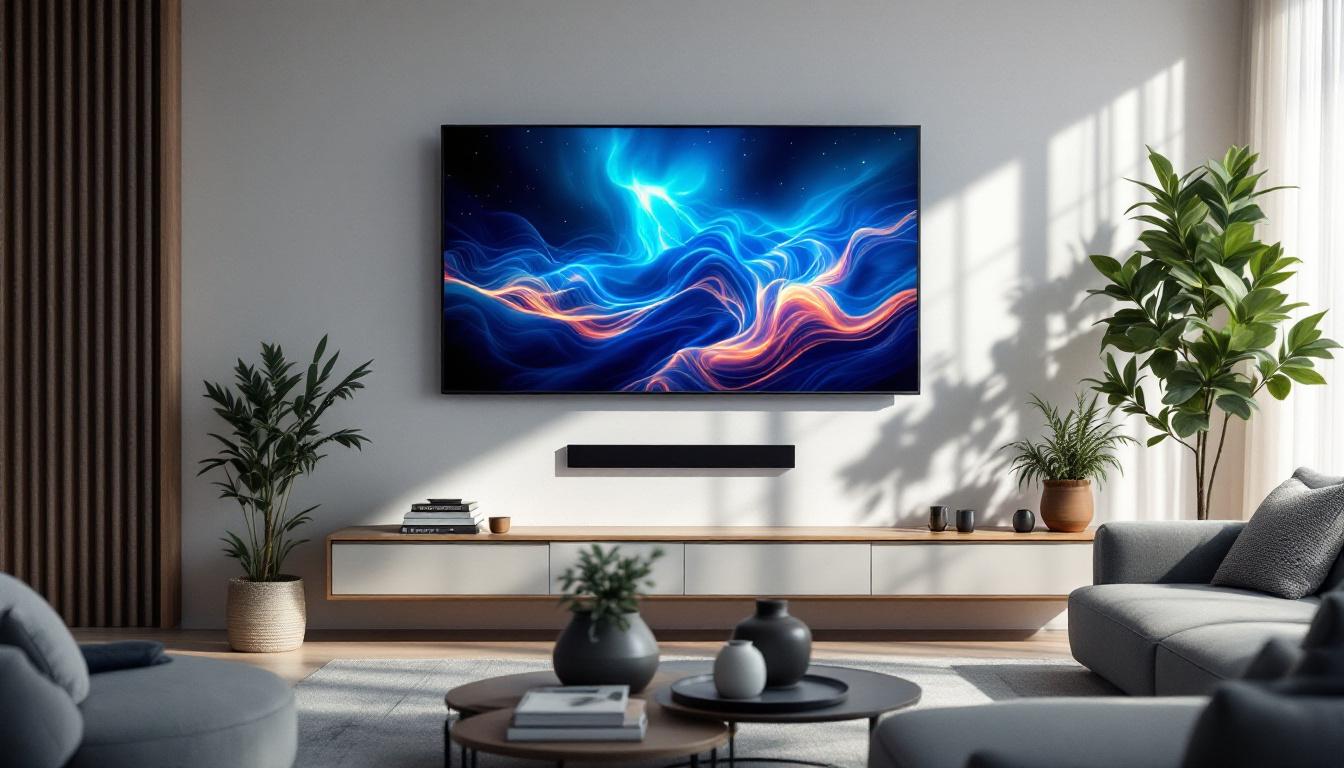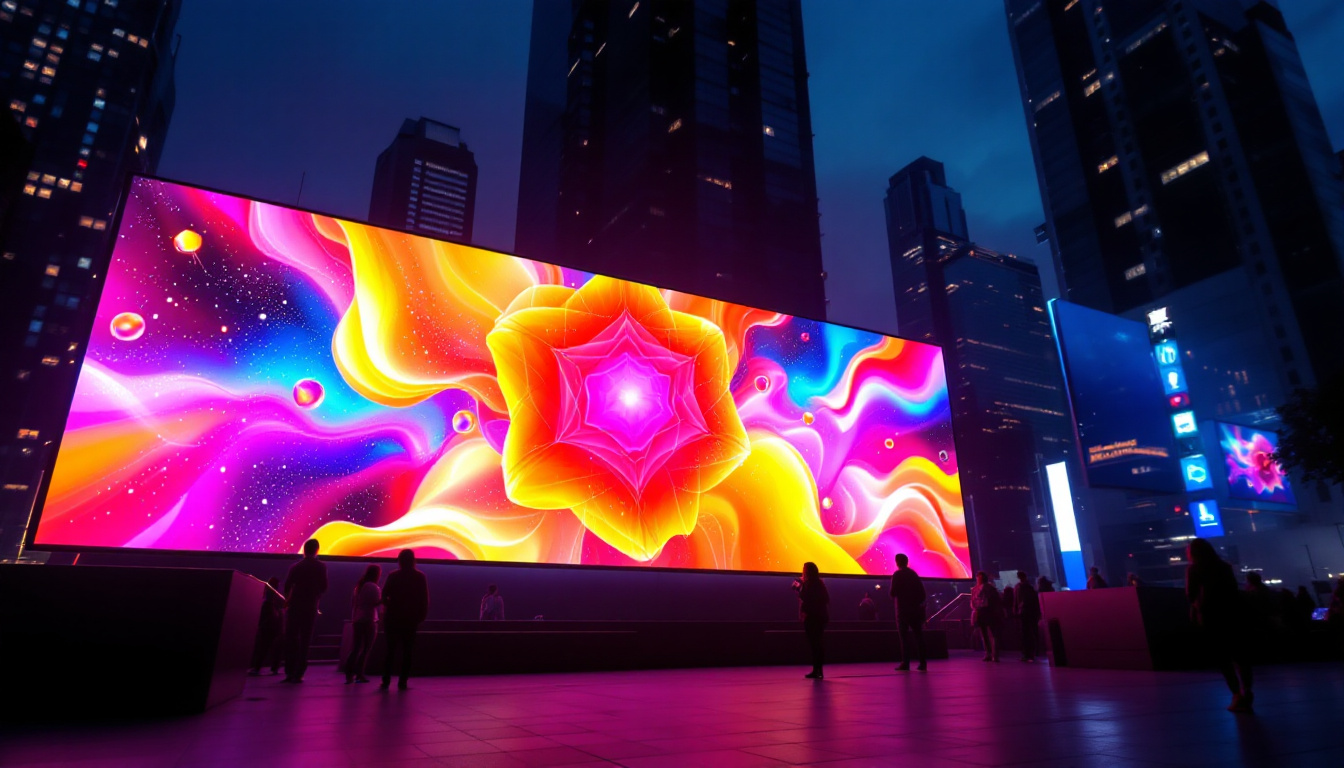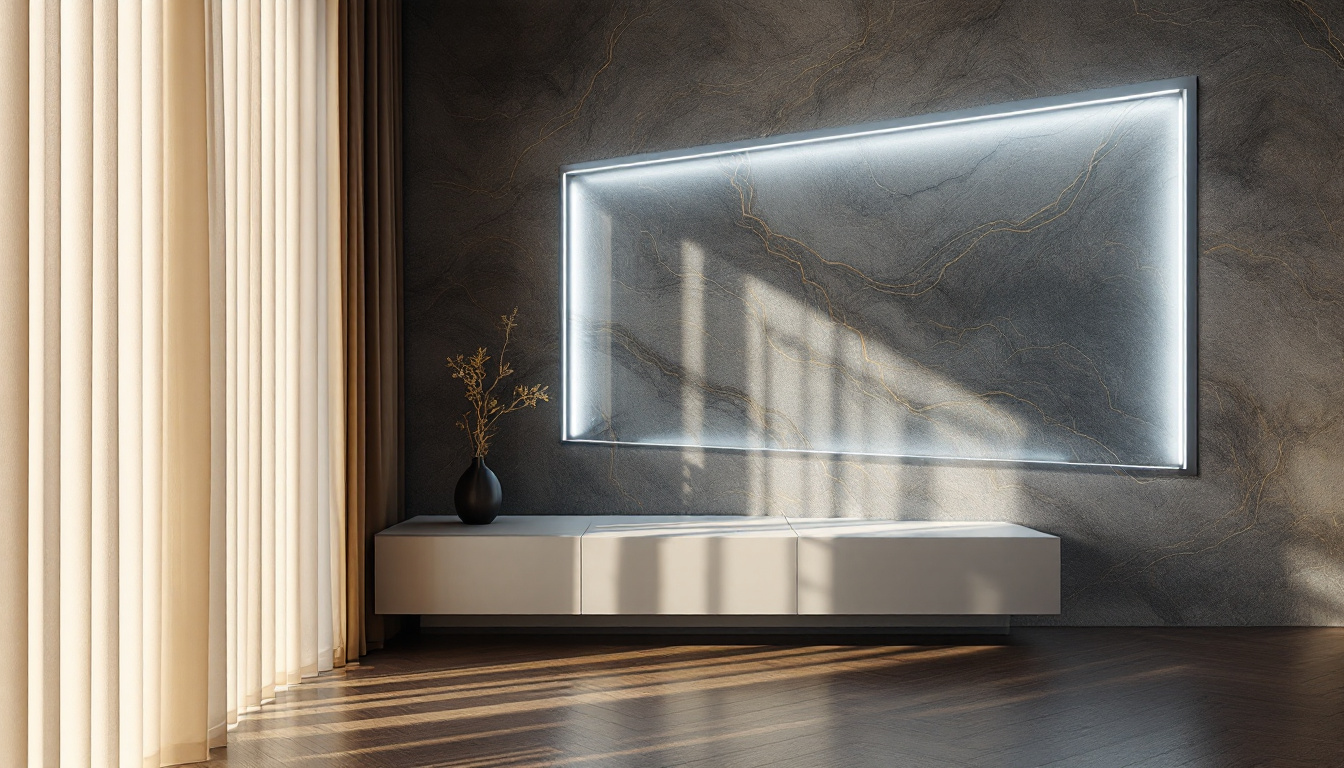In the world of cinema, the visual experience is paramount. The size and quality of the screen play a crucial role in how audiences perceive and enjoy films. With the advent of LED technology, cinema screens have evolved significantly, offering brighter images and greater flexibility in design. This article delves into the intricacies of cinema screen size calculation, particularly focusing on LED displays, to help cinema operators and enthusiasts alike understand the best practices for selecting the ideal screen size.
Understanding Screen Size in Cinemas
Screen size is a fundamental aspect of the movie-watching experience. It influences not just the visual appeal but also the overall immersion of the audience. The dimensions of a screen can affect how viewers perceive the film, including aspects like detail, depth, and engagement.
The Importance of Aspect Ratio
Aspect ratio refers to the proportional relationship between the width and height of a screen. Common aspect ratios in cinema include 16:9 for standard HD content and 2.39:1 for widescreen films. Understanding aspect ratios is essential for achieving the desired cinematic effect.
When calculating screen size, it is vital to consider the aspect ratio of the content being displayed. A mismatch can lead to letterboxing or cropping, which detracts from the viewer’s experience. Therefore, selecting a screen that complements the aspect ratio of the majority of films shown is crucial. For instance, many blockbuster films are shot in a wider format, allowing for expansive landscapes and intricate details that draw viewers into the story. This is particularly important in genres like epic adventures and science fiction, where visual storytelling relies heavily on the cinematic canvas provided by the screen.
Viewing Distance and Screen Size
Another critical factor in determining the appropriate screen size is the viewing distance. The distance between the audience and the screen significantly impacts how well viewers can appreciate the details of the film.
Generally, a rule of thumb is to have the viewing distance be approximately 1.5 to 2.5 times the diagonal size of the screen. For example, if a cinema screen measures 100 inches diagonally, the ideal viewing distance would range from 12.5 to 25 feet. This guideline helps ensure that viewers can comfortably see the entire screen without straining their eyes. Additionally, the type of content being shown can also influence optimal viewing distance; for instance, action-packed sequences may benefit from a closer proximity to enhance the adrenaline rush, while slower-paced dramas might encourage a more relaxed viewing experience from a greater distance. Furthermore, advancements in technology, such as 4K resolution, allow for closer viewing distances without sacrificing image quality, further blurring the lines of traditional guidelines and enhancing the overall cinematic experience.
LED Display Technology in Cinemas
LED displays have revolutionized the cinema industry, providing brighter images, better color accuracy, and increased flexibility in installation. Unlike traditional projection systems, LED screens can be configured to fit various spaces and requirements, making them an attractive option for modern cinemas.
Benefits of LED Displays
One of the primary advantages of LED technology is its brightness. LED screens can deliver high levels of luminance, ensuring that images remain vibrant even in well-lit environments. This capability is particularly beneficial for cinemas that may not have complete control over ambient light.
Additionally, LED displays offer superior color accuracy and contrast ratios compared to traditional projection systems. This results in richer, more lifelike images that enhance the viewing experience. Furthermore, LED technology allows for a wider color gamut, enabling filmmakers’ visions to be more faithfully represented on screen.
Moreover, LED displays have a significantly longer lifespan than traditional projectors, which reduces maintenance costs and downtime for cinemas. With advancements in technology, many LED screens can last up to 100,000 hours, meaning they can operate for years without needing replacement. This longevity not only benefits cinema operators financially but also contributes to a more sustainable approach to technology in the entertainment industry.
Flexibility and Customization
LED displays provide unparalleled flexibility in terms of size and shape. They can be seamlessly integrated into various architectural designs, allowing cinemas to create unique viewing environments. This adaptability is particularly advantageous for venues that host a variety of events, from film screenings to live performances.
Moreover, LED screens can be customized to meet specific requirements, such as curved or ultra-wide formats. This customization not only enhances the aesthetic appeal of the cinema but also allows for a more immersive viewing experience, drawing audiences into the film. The ability to create multi-screen configurations or even interactive displays can transform a standard cinema into an engaging multimedia experience, captivating audiences in ways that traditional setups cannot.
In addition to their visual capabilities, LED displays also support advanced technologies such as high dynamic range (HDR) and 4K resolution, further elevating the quality of the cinematic experience. HDR allows for a greater range of brightness and color detail, making scenes appear more realistic and dynamic. As cinemas continue to embrace these innovations, they are not only enhancing the way stories are told but also redefining the very essence of the movie-going experience, making it more engaging and memorable for audiences of all ages.
Calculating the Ideal Screen Size
Determining the ideal screen size for a cinema involves several factors, including the aspect ratio, viewing distance, and the type of content being displayed. A systematic approach can help cinema operators make informed decisions that enhance the audience’s experience.
Step-by-Step Calculation
To calculate the ideal screen size, start by assessing the viewing distance. Measure the distance from the farthest seat in the auditorium to the screen. Next, apply the recommended viewing distance ratio of 1.5 to 2.5 times the screen size.
For example, if the farthest seat is 30 feet away, the ideal screen size would be between 60 inches (5 feet) and 120 inches (10 feet) diagonally. This range ensures that all viewers can enjoy the film without difficulty.
Using a Screen Size Calculator
For those seeking a more straightforward approach, various online screen size calculators can assist in determining the appropriate dimensions based on specific parameters. These tools typically require input such as the viewing distance, aspect ratio, and desired resolution.
By leveraging these calculators, cinema operators can quickly and efficiently ascertain the best screen size for their venue, ensuring that they provide an optimal viewing experience for their audience.
Considerations for Different Cinema Types
Different types of cinemas may require distinct approaches to screen size selection. Factors such as audience demographics, film genres, and venue layout can all influence the ideal screen dimensions.
Multiplex Cinemas
Multiplex cinemas, which typically feature multiple screening rooms, often prioritize versatility in their screen sizes. These venues may showcase a mix of blockbuster films, independent releases, and special events, necessitating a range of screen sizes to accommodate various content types.
In such settings, it is beneficial to have larger screens in the main auditoriums for high-demand films, while smaller screens can be reserved for niche or independent films. This strategy allows multiplexes to cater to diverse audience preferences while maximizing their operational efficiency.
Art House Cinemas
Art house cinemas often focus on independent, foreign, and classic films, attracting a more niche audience. For these venues, screen size selection may be influenced by the specific characteristics of the films being shown.
Since many art house films are shot with unique aspect ratios, it is essential to choose screens that can accommodate these variations without compromising the viewing experience. Additionally, considering the intimacy of the space can lead to a more engaging atmosphere, with slightly smaller screens enhancing the audience’s connection to the film.
Future Trends in Cinema Screen Technology
The landscape of cinema technology is continually evolving, with advancements in screen technology promising even more immersive experiences for audiences. As LED technology continues to develop, several trends are emerging that could shape the future of cinema screens.
Higher Resolutions
As consumer expectations for visual quality rise, cinemas are increasingly adopting higher resolution displays. 4K and even 8K resolutions are becoming more common, offering unparalleled detail and clarity. This trend necessitates careful consideration of screen size, as larger screens can better showcase the benefits of higher resolutions.
With the introduction of higher resolution formats, cinema operators must ensure that their screen sizes align with the capabilities of the technology. This alignment will help maintain the quality of the viewing experience and meet audience expectations.
Integration of Virtual Reality (VR) and Augmented Reality (AR)
As virtual and augmented reality technologies gain traction, cinemas may explore new ways to integrate these experiences into their offerings. This could include immersive screenings that combine traditional film with VR or AR elements.
In such cases, screen size and configuration will play a pivotal role in delivering a seamless experience. Cinemas may need to adapt their screen setups to accommodate these innovative formats, ensuring that audiences can fully engage with the content.
Conclusion
Choosing the right screen size for a cinema is a multifaceted process that requires careful consideration of various factors, including aspect ratio, viewing distance, and the type of content being displayed. With the advancements in LED display technology, cinema operators have more options than ever to create captivating viewing experiences.
By utilizing tools such as screen size calculators and understanding the unique needs of different cinema types, operators can make informed decisions that enhance the overall experience for their audiences. As technology continues to evolve, staying abreast of trends and innovations will be essential for maintaining a competitive edge in the cinema industry.
Ultimately, the goal is to create a cinematic environment that not only entertains but also captivates and immerses audiences in the magic of film. By focusing on the right screen size and technology, cinemas can ensure that they remain a vital part of the entertainment landscape for years to come.
Discover the Future of Cinema with LumenMatrix
Ready to elevate your cinema’s visual experience with the latest in LED display technology? LumenMatrix is at the forefront of innovation, offering a wide array of LED display solutions that cater to your unique needs. From immersive Indoor LED Wall Displays to dynamic Outdoor LED Wall Displays, and from engaging Sports Displays to customizable All-in-One LED solutions, LumenMatrix has the technology to transform your venue. Don’t just entertain your audience; captivate them with unparalleled clarity and impact. Check out LumenMatrix LED Display Solutions today and step into the future of cinematic storytelling.

